When I stood at the start of Regensburg’s Stone Bridge in Bavaria, I could already sense how this UNESCO World Heritage Site ties the city’s present to its medieval roots.
As I walked across the bridge, centuries-old stonework surrounded me, with sweeping views of Regensburg’s Old Town and the Danube’s gentle currents flowing just below.
This bridge isn’t just an architectural gem—it’s a living thread in Germany’s story, drawing both travelers and locals to soak in its atmosphere.
With every step, I couldn’t help but picture the merchants, travelers, and townsfolk who’ve crossed this very path for nearly 900 years.
The Old Town at the end of the bridge looked like something straight out of a storybook—cobbled streets, colorful buildings, all carefully preserved.
If you’re thinking about a trip to Germany, slowing down to explore Regensburg on foot—especially across this iconic bridge—gives you a rare chance to catch the best of Bavaria’s medieval charm in just one afternoon.
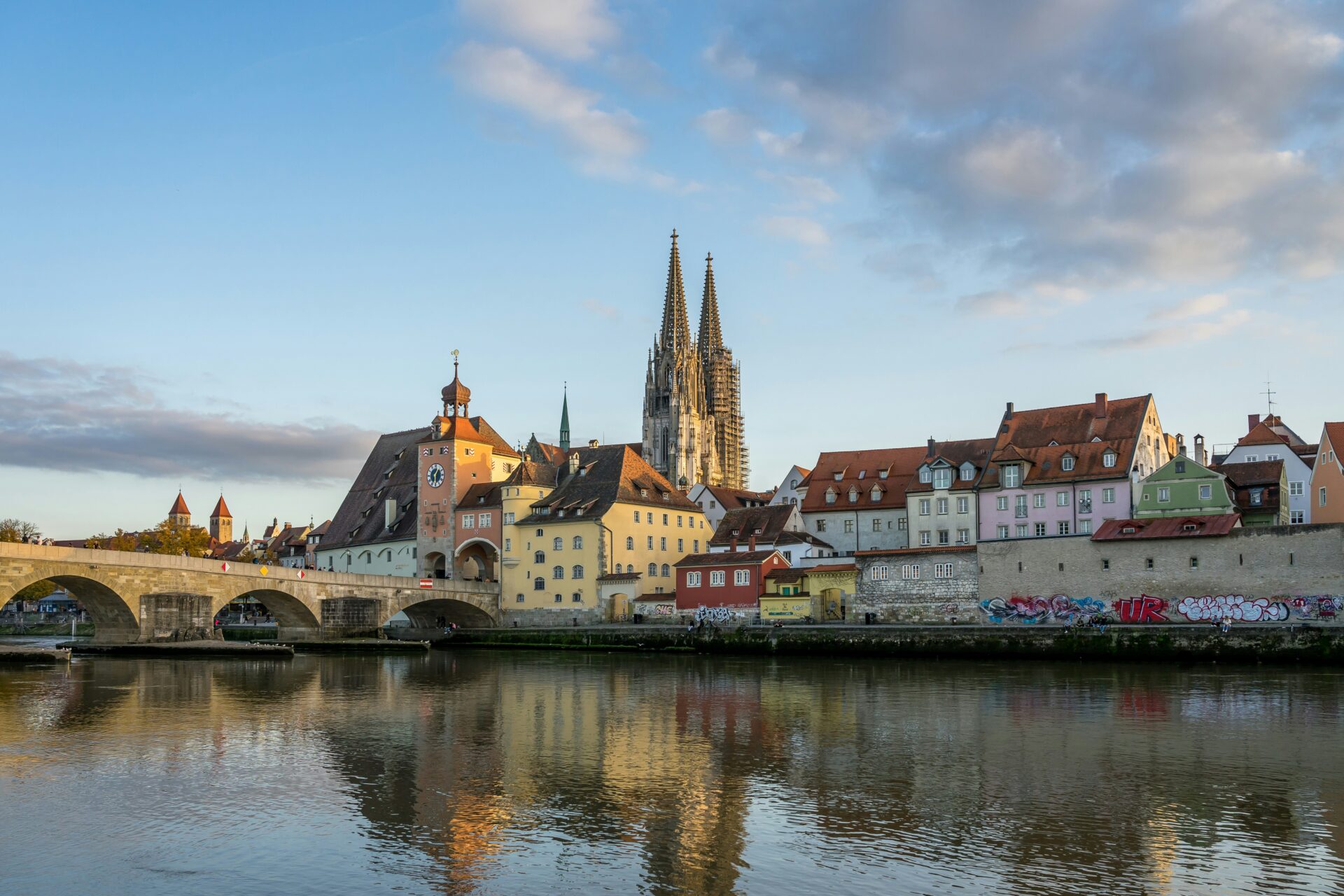
Crossing the Stone Bridge: Gateway to Regensburg’s Past
As I stepped onto the Steinerne Brücke, I realized I was walking over more than just stone—I was stepping back in time.
I took in the medieval engineering, the quirky Bruckmandl statue, and the sweeping Danube views. It felt like the stories and spirit of old Regensburg were right there with me.
Origins and Medieval Engineering
The Stone Bridge, or Steinerne Brücke, goes all the way back to the 12th century.
Builders started construction in 1135 and finished in just eleven years—pretty wild for that era.
This medieval wonder stretches across the Danube on 16 arches, connecting Regensburg’s Old Town with Stadtamhof.
As I crossed, I admired the builders’ skill. They made it so well that for over 800 years, it was the only crossing over the Danube here.
The stone piers have held strong through wars, floods, and the relentless march of time.
I found it amazing that medieval engineers built something this solid using just wooden scaffolding, pulleys, and basic cranes.
Even now, the bridge stands as a testament to medieval craftsmanship.
| Year Complete | Number of Arches | Original Use |
|---|---|---|
| 1146 | 16 | Trade & military route |

Legend of the Bruckmandl and Bridge Tower
Halfway across, I paused to check out the Bruckmandl—a small stone statue perched at the bridge’s highest point.
Locals call him the “Bridge Man.” He’s wrapped in legends; one says he’s the bridge’s master builder, keeping watch over his life’s work.
These stories give the bridge its quirky personality.
The nearby bridge tower, once part of the city’s medieval defenses, now stands as a dramatic lookout.
When I climbed up, I could easily picture guards scanning the river for travelers or enemies.
The tower does more than just offer a view—it’s a reminder that this was once Regensburg’s main gate.
If you’re here, take a moment at both the Bruckmandl and the tower. They really capture the spirit and mystery of centuries past.
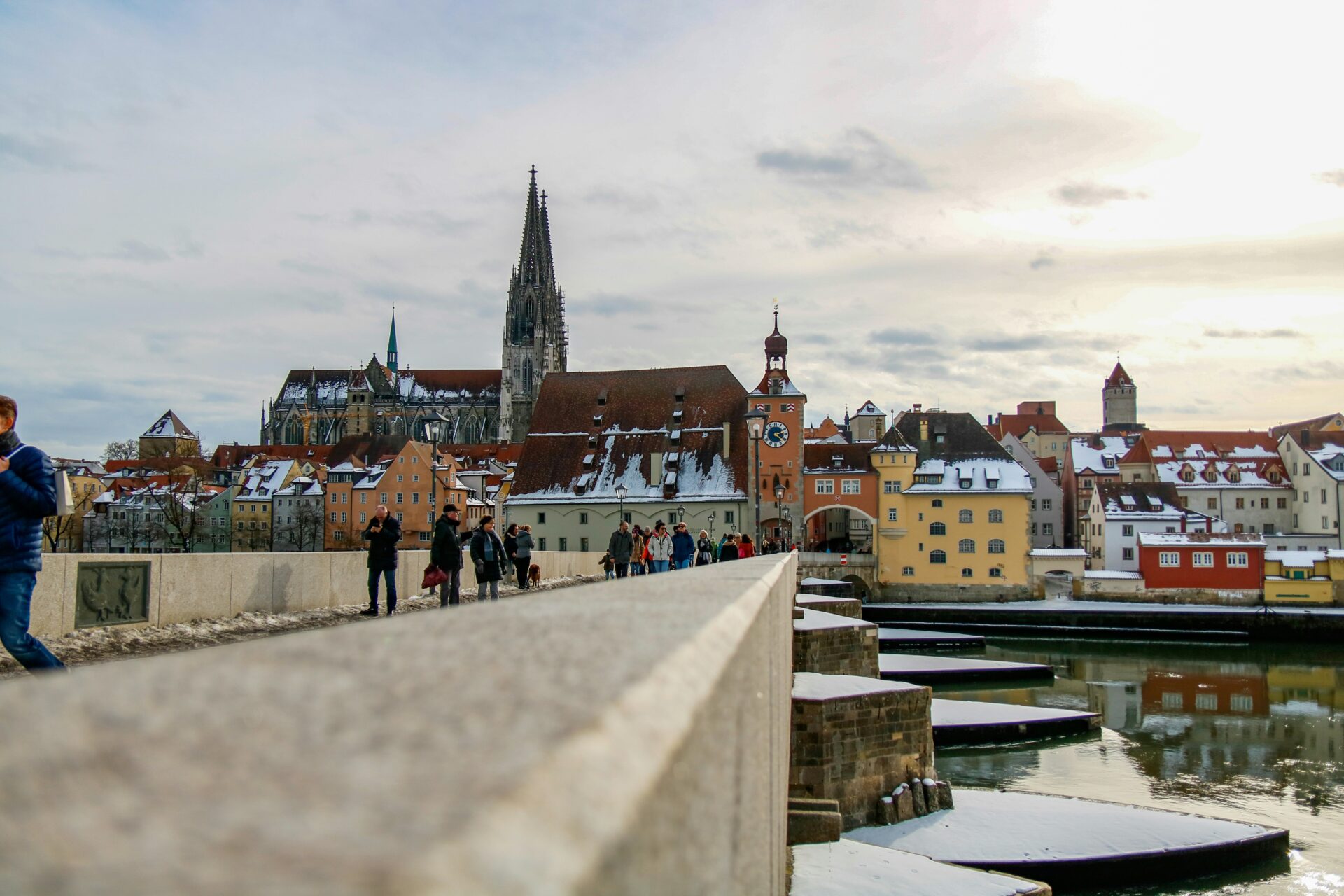
Scenic Danube River Views
The scenery around the bridge might have been my favorite part.
The Danube flows quietly below, reflecting red roofs and old towers.
Early morning or sunset? That’s when the light makes the water glow with gold and blue.
From the middle of the bridge, I watched boats and the occasional river cruise drift by.
One side offers the spires of the Old Town; the other, the peaceful streets of Stadtamhof.
I get why artists and photographers flock here.
If you visit, pause for a while. The blend of river, sky, and stone creates a view you won’t forget—it ties together Regensburg’s history and natural beauty in one unforgettable scene.
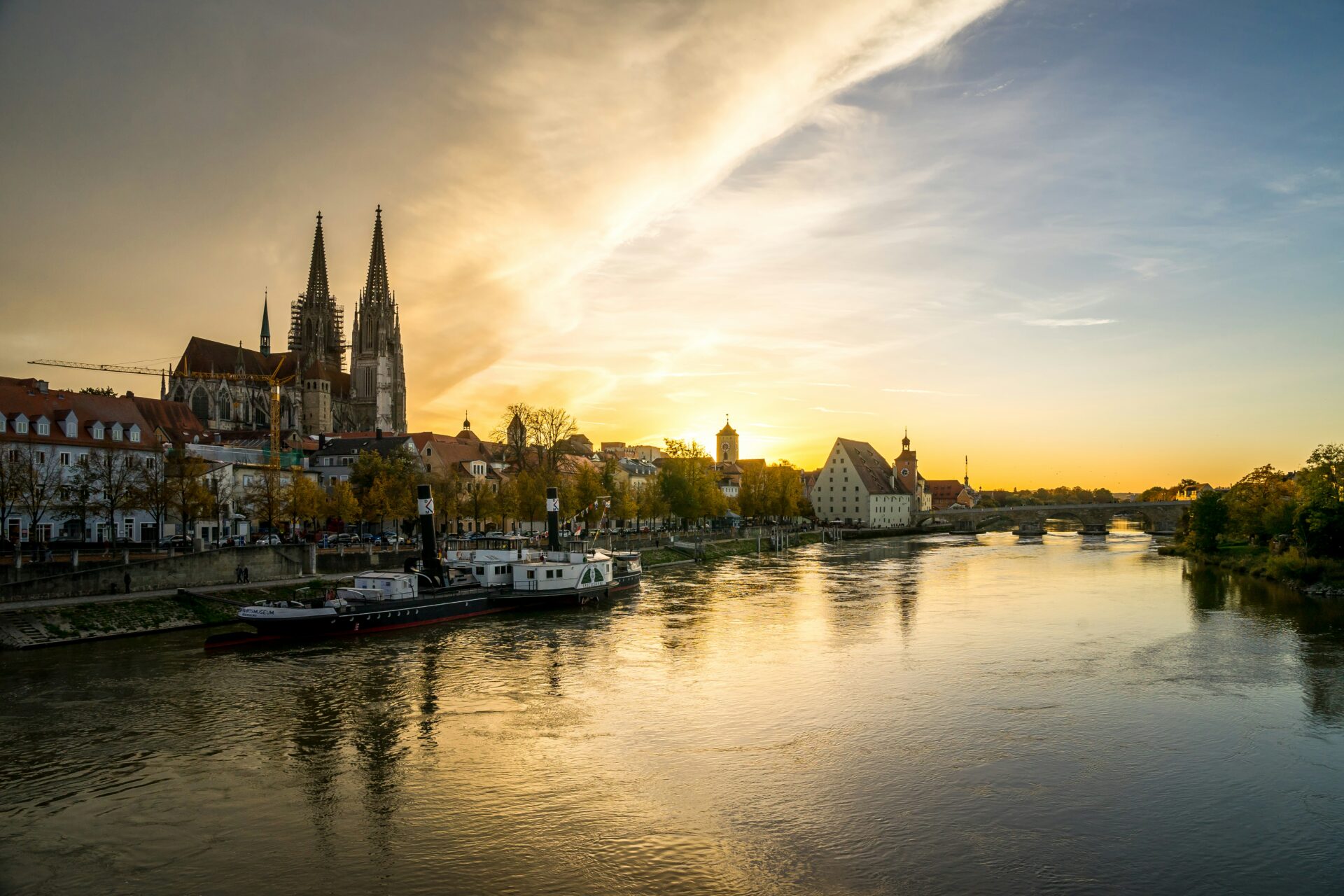
Wandering the Old Town: Timeless Bavarian Charm
Medieval Regensburg feels alive in every stone and archway.
From bustling squares to tucked-away cafés, exploring the Old Town is like stepping into a secret at the heart of Bavaria.
Cobbled Streets and Historic Squares
As I wandered Regensburg’s Old Town, I noticed the cobblestone streets winding beneath my feet.
The stones, worn down by centuries of footsteps, make every walk a real connection to the city’s past.
Haidplatz, the lively main square, grabbed my attention first.
Colorful houses and old inns surround it, making it a central meeting spot.
Local events and markets pop up here throughout the year, giving the space a lively energy.
When I wandered off the main paths, I found hidden squares and quiet courtyards.
Some had fountains; others were framed by medieval buildings.
I liked how these spaces invite you to slow down, snap some photos, and just enjoy the historic atmosphere.
It’s surprisingly easy to imagine merchants and townsfolk gathering here long ago.
Quick Tip: Wear flat shoes—the old cobbles can be pretty uneven.
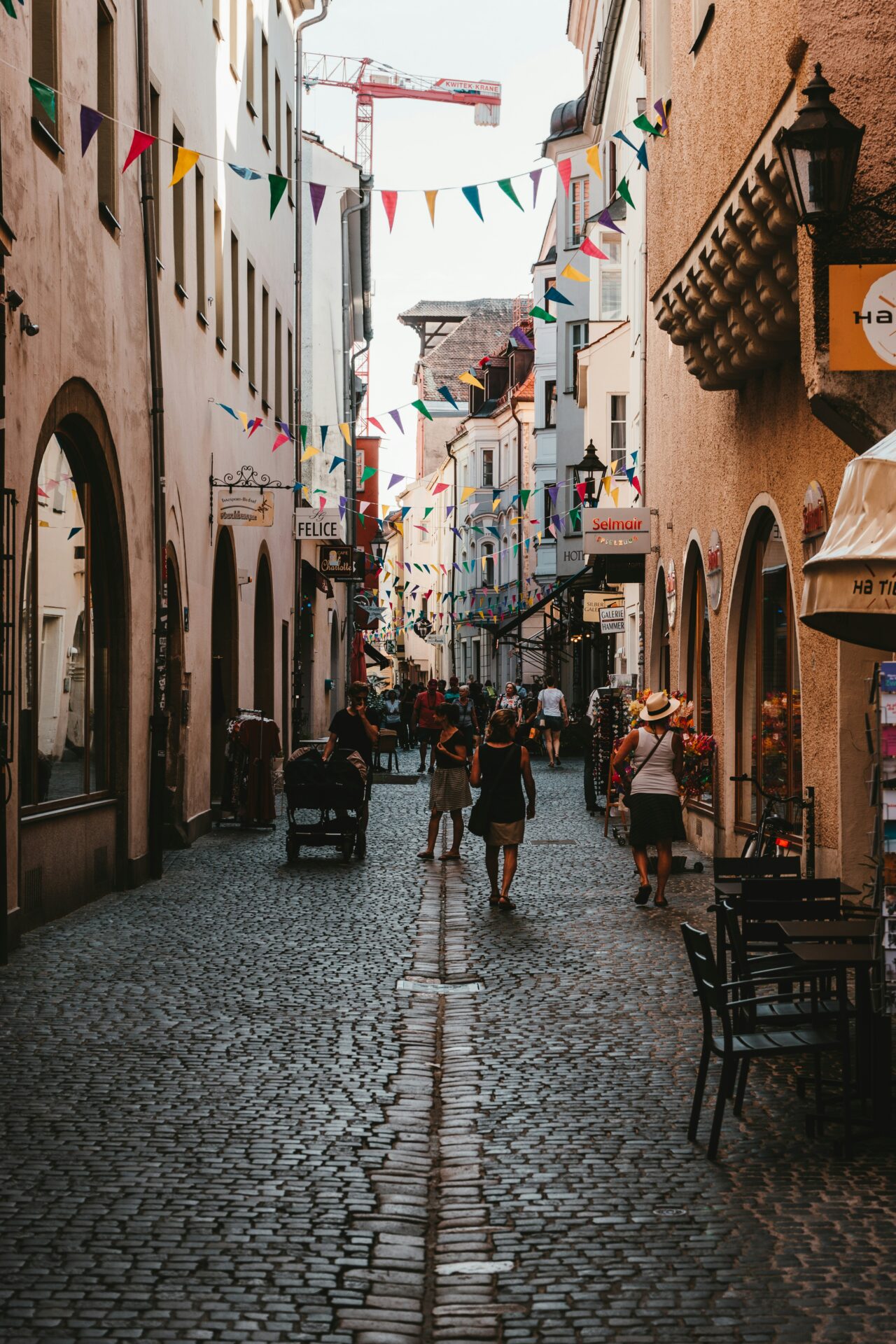
Shops, Cafés, and Wurstkuchl
Every turn brought something new, from tiny bookshops to chocolate stores with tempting displays.
I stopped often to browse local crafts, pick up Bavarian souvenirs, and admire handmade jewelry.
Cafés spill onto the sidewalks, so I grabbed a seat and watched daily life go by.
Trying a slice of kuchen or a fresh pretzel here felt just right.
The smell of coffee and pastries seemed to follow me everywhere.
The Wurstkuchl—the city’s famous sausage kitchen—sits right on the riverbank next to the Stone Bridge.
I queued up for a bit and got a plate of grilled sausages with sauerkraut and fresh rolls.
The smoky flavor and the lively scene made for a memorable lunch.
| Recommended Local Snack | Where to Find It |
|---|---|
| Grilled sausages | Wurstkuchl by Bridge |
| Bavarian pastries | Many local cafés |
| Handmade chocolates | Specialty shops |
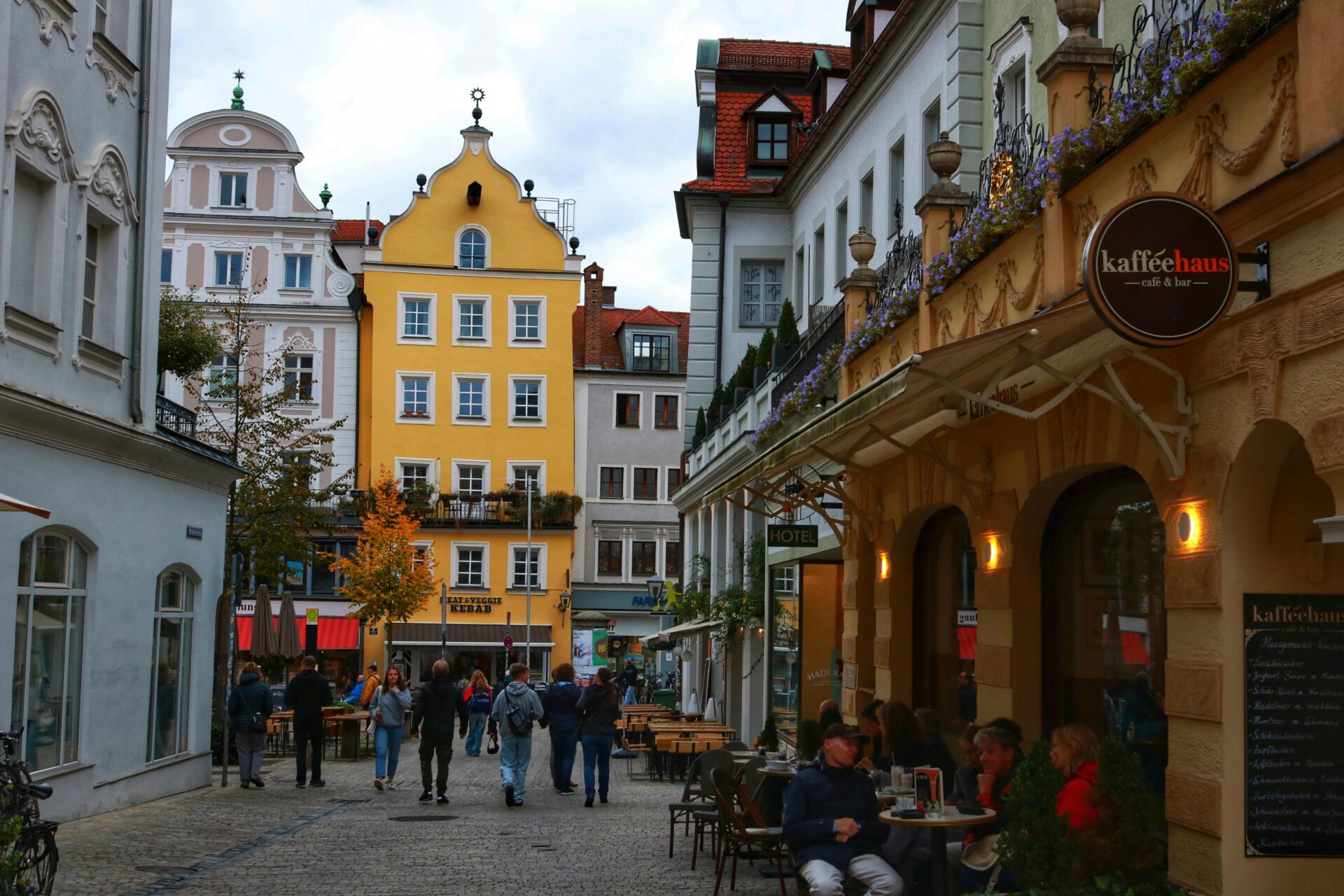
Altstadt and Stadtamhof
The Altstadt (Old Town) is packed with winding alleys, tall medieval towers, and buildings with ornate facades.
I loved exploring without a plan, letting the city reveal its surprises.
Each block feels unique, with painted shutters and pressed flowers in the windows.
Crossing the Stone Bridge took me into Stadtamhof, a quieter neighborhood just across the Danube.
The pace slowed down: fewer crowds, more locals greeting each other, and small gardens by the street.
It’s a great spot for photos of the Old Town’s skyline and a chance to unwind after the busy center.
Both areas are easy to explore on foot.
Signs in German and English helped me find both main attractions and hidden gems.
Whether you’re after history, local food, or just a fresh view of the city, wandering both Altstadt and Stadtamhof gives you a real taste of Regensburg’s Bavarian charm.
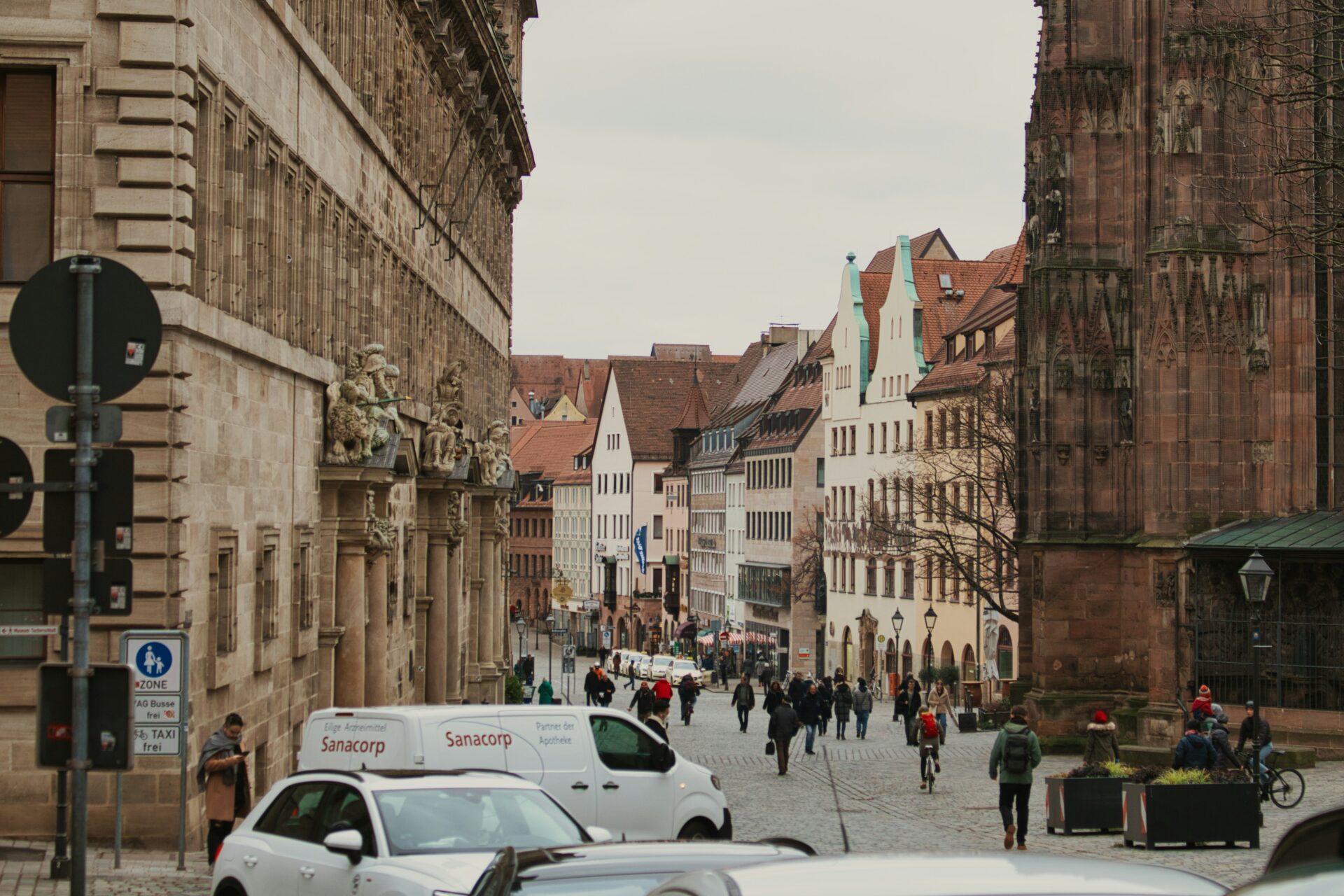
Medieval Marvels and Landmarks Await
Walking through Regensburg feels like stepping back in time.
Every corner reveals medieval architecture, Roman legacies, and a city that’s still buzzing with life.
Regensburg Cathedral: St. Peter’s Gothic Masterpiece
Regensburg Cathedral, or St. Peter’s Cathedral, dominates the skyline with its twin spires and intricate facade.
As I approached, the delicate stonework and sheer height really hit me.
It’s the best example of French Gothic architecture in southern Germany, and it’s been towering over the city since the 13th century.
Inside, sunlight streams through stained glass windows that have survived since the Middle Ages.
The colors dance on the stone columns, filling the space with a gentle glow.
I paused to admire the wood choir stalls and the massive organ, which fills the whole cathedral with music during services and concerts.
Locals still gather here for daily mass, and travelers like me stumble on hidden chapels and centuries-old relics.
If you’re in Regensburg, you really can’t miss the cathedral—for both its peaceful vibe and its architectural beauty.

Porta Praetoria and Roman Legacies
Not far from the cathedral, I came across the Porta Praetoria.
Built in 179 AD during Roman rule, this stone gate is one of Regensburg’s oldest structures.
Standing in front of it, I imagined Roman soldiers marching through the arch to the legionary camp.
Unlike many Roman gates in Europe, Porta Praetoria is part of the city itself—tucked into a hotel, but still easy to spot from the street.
Its chunky stone blocks have softened with time, and I found the whole thing pretty fascinating.
Signs in German and English share the history, making it easy to picture Regensburg as a bustling Roman outpost.
If you’re into Roman history, take a moment to walk around and touch the ancient stones.
Roman ruins in the middle of a medieval Bavarian town? Not something you see every day.
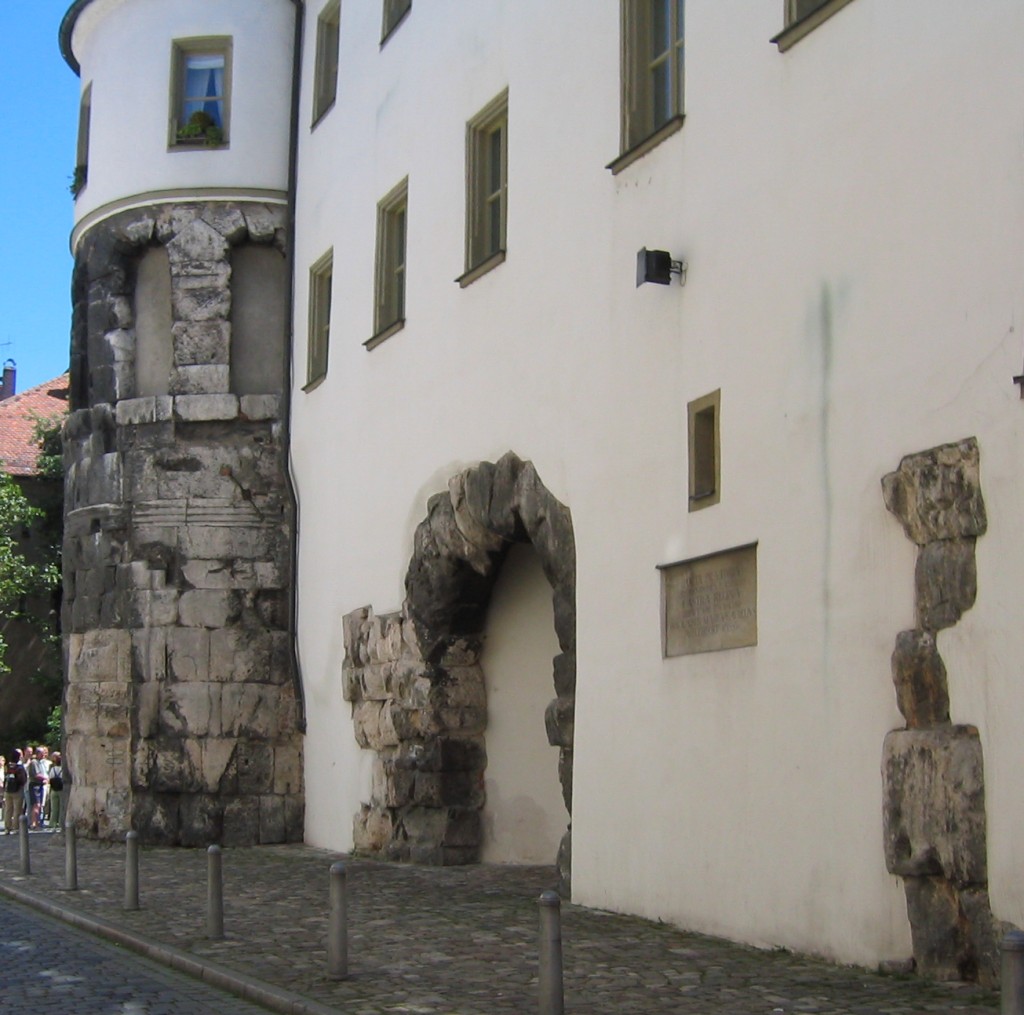
Old Town Hall and Altes Rathaus
Deeper in the Old Town, I reached the lively square in front of the Old Town Hall, or Altes Rathaus.
With its clock tower, colorful frescoes, and gothic windows, this building has been at the heart of city life since the 13th century.
The Altes Rathaus once hosted the Imperial Diet—the assembly of the Holy Roman Empire—for almost 150 years.
I joined a guided tour that took me through old council chambers, richly decorated rooms, and a maze of medieval dungeons below.
The stories of political intrigue and justice from centuries past made the history feel surprisingly personal.
If you want to get a sense of Regensburg’s civic heart, this is the place.
There are regular English-language tours, and the guides are happy to answer questions about the city’s unique political past.
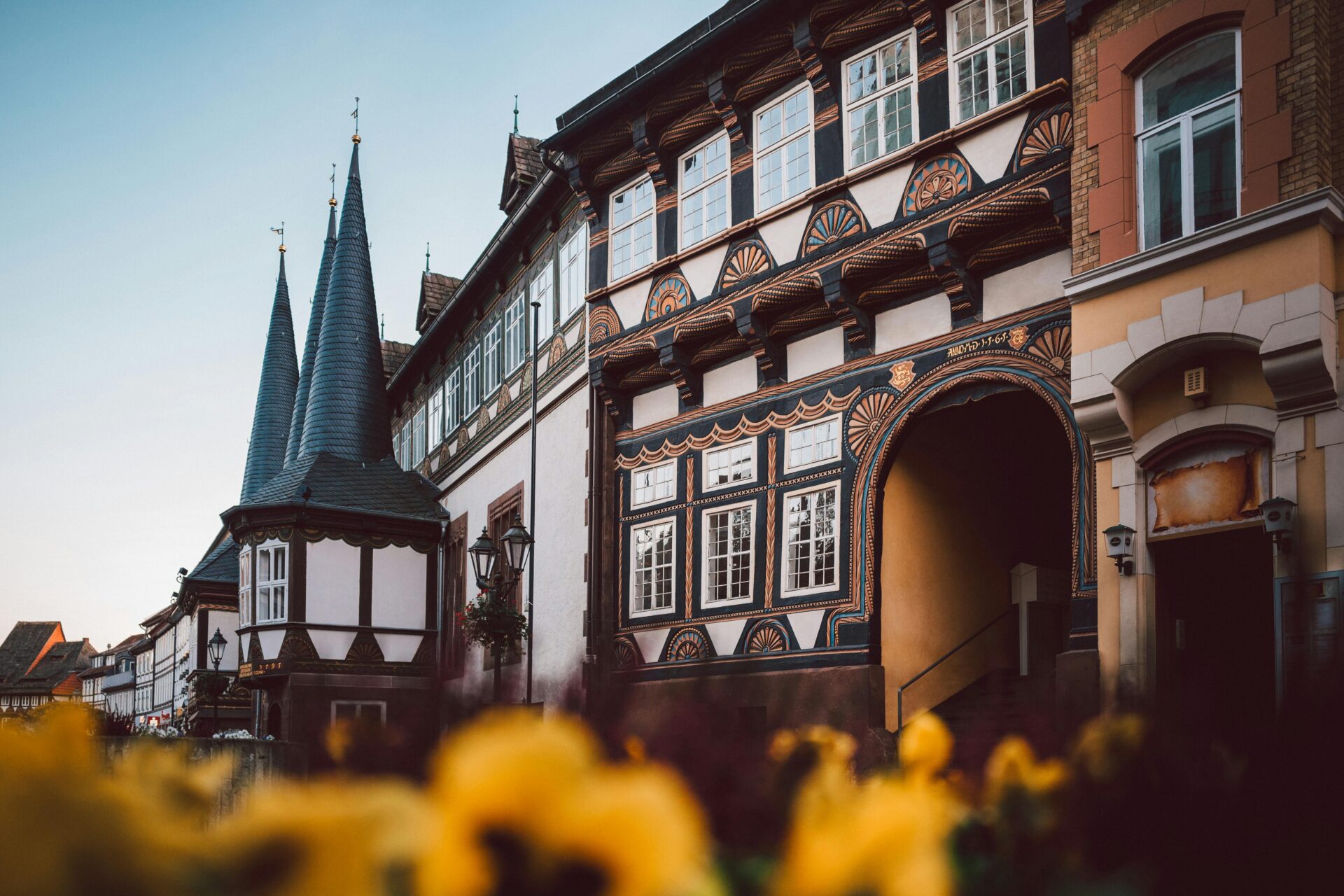
Neupfarrplatz: A Hub of History
I wrapped up my visit at Neupfarrplatz, a lively square with layers of history under its cobblestones.
This spot was once the center of Regensburg’s Jewish quarter before the community was expelled in the 16th century.
Today, an outline in the ground traces the former synagogue—a moving reminder of the city’s Jewish heritage.
The square buzzes with cafés, market stalls, and street performers.
Locals flock here, and it’s easy to see why.
Right in the middle, I found the Neupfarrkirche, a simple but elegant church with roots in both Catholic and Protestant history.
Beneath the square, there’s an underground museum showing off Roman walls and Jewish artifacts found during digs.
I was amazed by how many centuries are layered here, side by side.
Neupfarrplatz is more than just a square—it’s a living timeline of Regensburg’s past, right under your feet.

Walking Tours, Guided Experiences, and Insider Tips
Crossing the Stone Bridge dropped me right into Regensburg’s medieval core, where history comes alive on every cobbled street.
Exploring the old town works best on foot, and there are a bunch of ways to discover the stories, flavors, and secrets of the city.
Guided Tours and River Cruises
I started with a guided walking tour from the tourist information center near the Domplatz.
Our guide shared stories behind landmarks like St. Peter’s Cathedral and the ancient Roman gate, Porta Praetoria.
These tours usually last one or two hours and offer a behind-the-scenes look at hidden courtyards, medieval towers, and narrow alleys I would’ve missed solo.
For something different, I tried a Danube river cruise.
The view from the water is fantastic—the bridge’s arches soaring overhead, pastel townhouses and spires lining the banks.
Most cruises include English commentary and last about 45 minutes.
Some even combine a river tour with a short city walk, which is perfect if you’re short on time.
You can book most tours ahead, but I found plenty of same-day options, especially in the busy summer months.
It’s smart to check at the tourist office for special themed walks, like night tours or ones focused on Regensburg’s Jewish heritage.

Self-Guided Walks: Must-See Spots
I grabbed a city map from the tourist office—free, by the way—and wandered around at my own pace. Crossing the Stone Bridge early in the morning felt peaceful; the old city slowly woke up with the sound of church bells.
On the other side, I found the Goliathhaus mural and wandered the cobbled lanes of Stadtamhof. The views here? Pretty much perfect if you ask me.
Must-see spots for any self-guided walk:
- St. Peter’s Cathedral and the Domplatz
- Porta Praetoria (Roman city gate)
- Old Town Hall (Altes Rathaus)
- Schloss Thurn und Taxis (city palace)
- Old Stone Bridge and river panorama
If you want a quieter walk, try crossing the Iron Bridge to Wöhrd Island. There’s more green space and you get a great view of the Danube.
I found signposts all over the old town, which made it easy to get around. Most attractions had small info boards in English, which I really appreciated.

Beer Gardens, Food, and Where to Relax
After a few hours on my feet, I ended up at a classic Bavarian beer garden. Down by the river, leafy terraces served up cold local beer and hearty snacks—definitely try the Regensburger Wurst with sweet mustard.
My favorite spot? The historic Wurstkuchl, right next to the Stone Bridge. They say it’s one of the oldest sausage kitchens in the world.
If you want something quieter, smaller cafés and bakeries have local pastries like Dampfnudel—sweet, fluffy dumplings with powdered sugar. When the sun came out, locals flocked to city parks and riverbanks, and I loved joining the relaxed crowd.
Heads up: Popular places fill up fast in summer, so I usually showed up a bit early for lunch or dinner. Most places take cards, but it’s handy to have a little cash for snacks or drinks at open-air stands.

Regensburg’s Place in History and the UNESCO Distinction
Regensburg bursts with stories—from Roman roots to its wild medieval skyline. I wandered into a city where every corner seems to whisper about empires, floods, and turning points in Europe.
The City’s Rise Along Medieval Trade Routes
Getting to know Regensburg, I could almost feel its energy as a center of medieval commerce. The Stone Bridge, finished in the 12th century, gave people a vital way across the Danube.
I walked on stones worn smooth by traders and travelers over centuries. The bridge brought in wealth and put Regensburg on the map.
Regensburg’s spot at the crossroads of major north-south and east-west routes made it a trading hub for salt, wine, and textiles. Merchants, tailors, and goldsmiths built their lives and fortunes here.
You can still see this in the tall patrician houses lining the narrow lanes. Many have ornate facades and watchtowers, quiet reminders of the deals and journeys that made the city famous.
This trading legacy helped Regensburg earn its UNESCO World Heritage Site title.
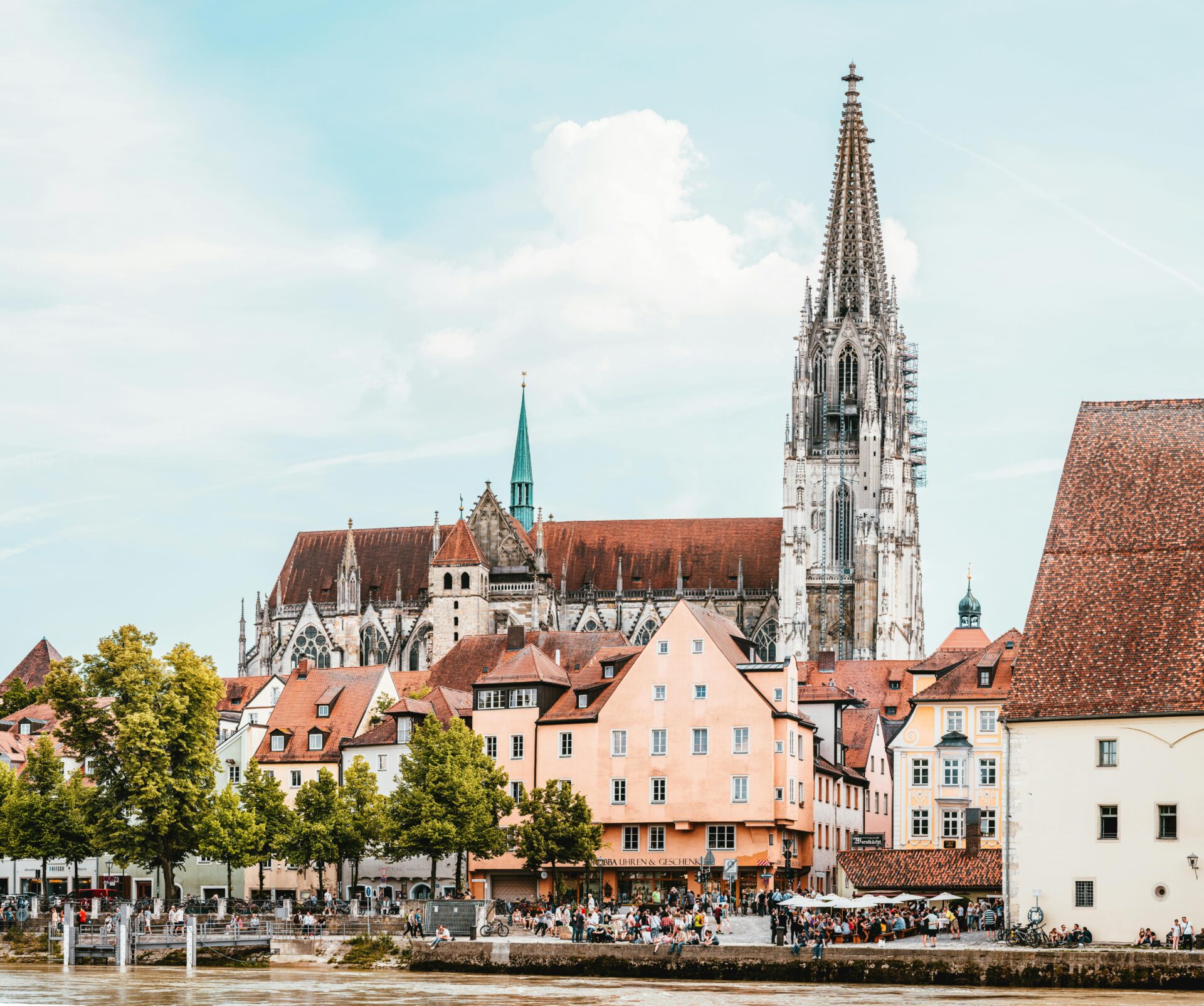
Life in a Free Imperial City and the Holy Roman Empire
Walking through Regensburg’s old town, I couldn’t miss the signs of self-government and civic pride. From the 13th century on, Regensburg ran its own affairs with only loose oversight from the Holy Roman Emperor.
The city council took care of local justice and taxes. Grand medieval buildings—like the Old Town Hall with its Gothic council chamber—still show off the days when the city’s elite made big decisions.
Because Regensburg answered directly to the Emperor (not a local noble), it set its own trade laws and built ties all over Europe. This freedom protected business and inspired all sorts of architectural growth, both of which play a big part in the city’s UNESCO status.
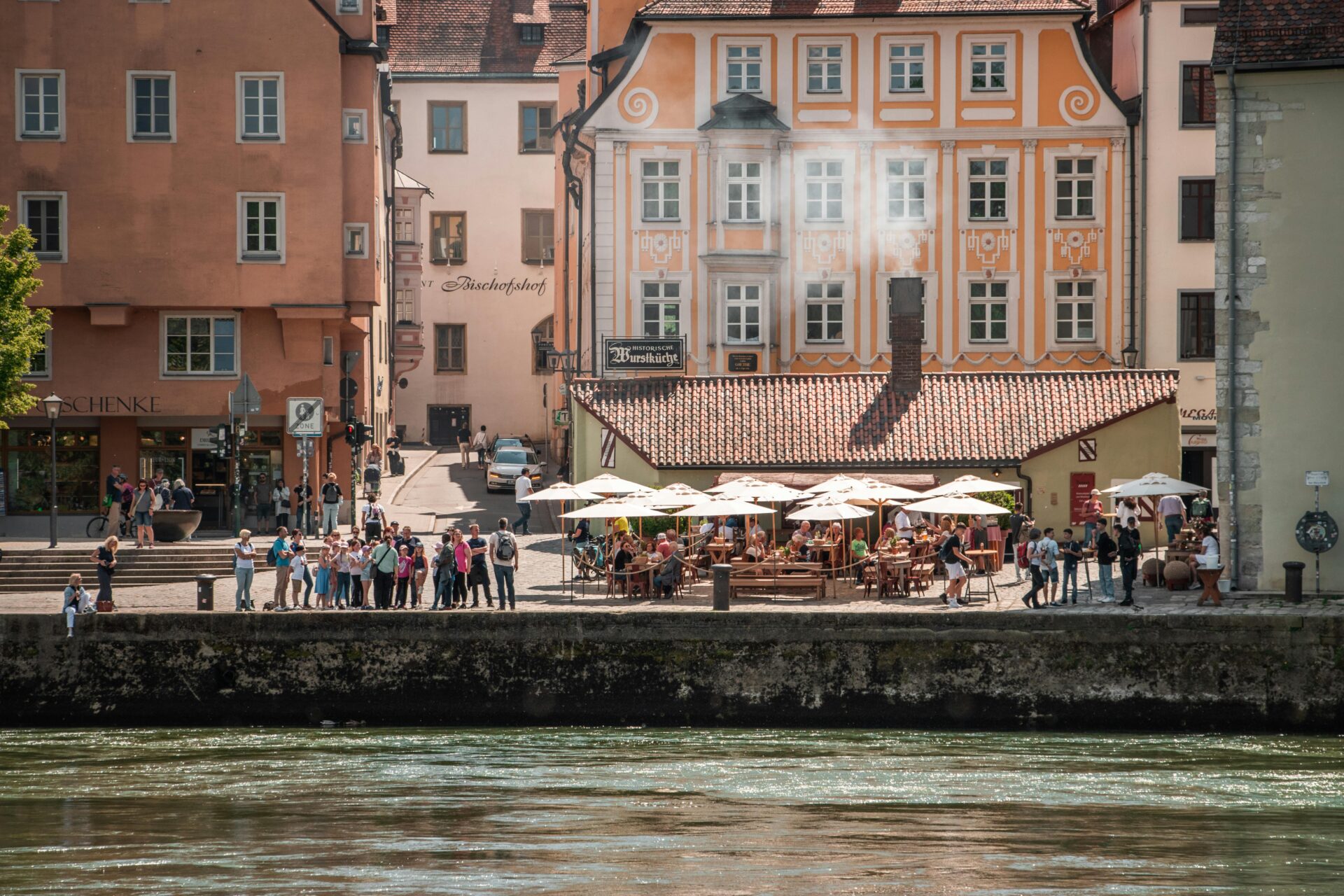
The Impact of Floods and Preservation Efforts
Standing on the Stone Bridge, I spotted old flood marks scratched into the walls. The Danube has given Regensburg life, but it’s also threatened to wash it away more than once.
Major floods hit the city again and again. Each time, people rebuilt.
Lately, the city has updated river barriers and restored medieval cellars to keep Regensburg safe for everyone. Since bombing mostly spared Regensburg during World War II, much of the real medieval architecture is still here.
Conservationists have worked hard since the early 1960s to keep the city’s character intact. These efforts led to Regensburg’s UNESCO World Heritage Site status in 2006.
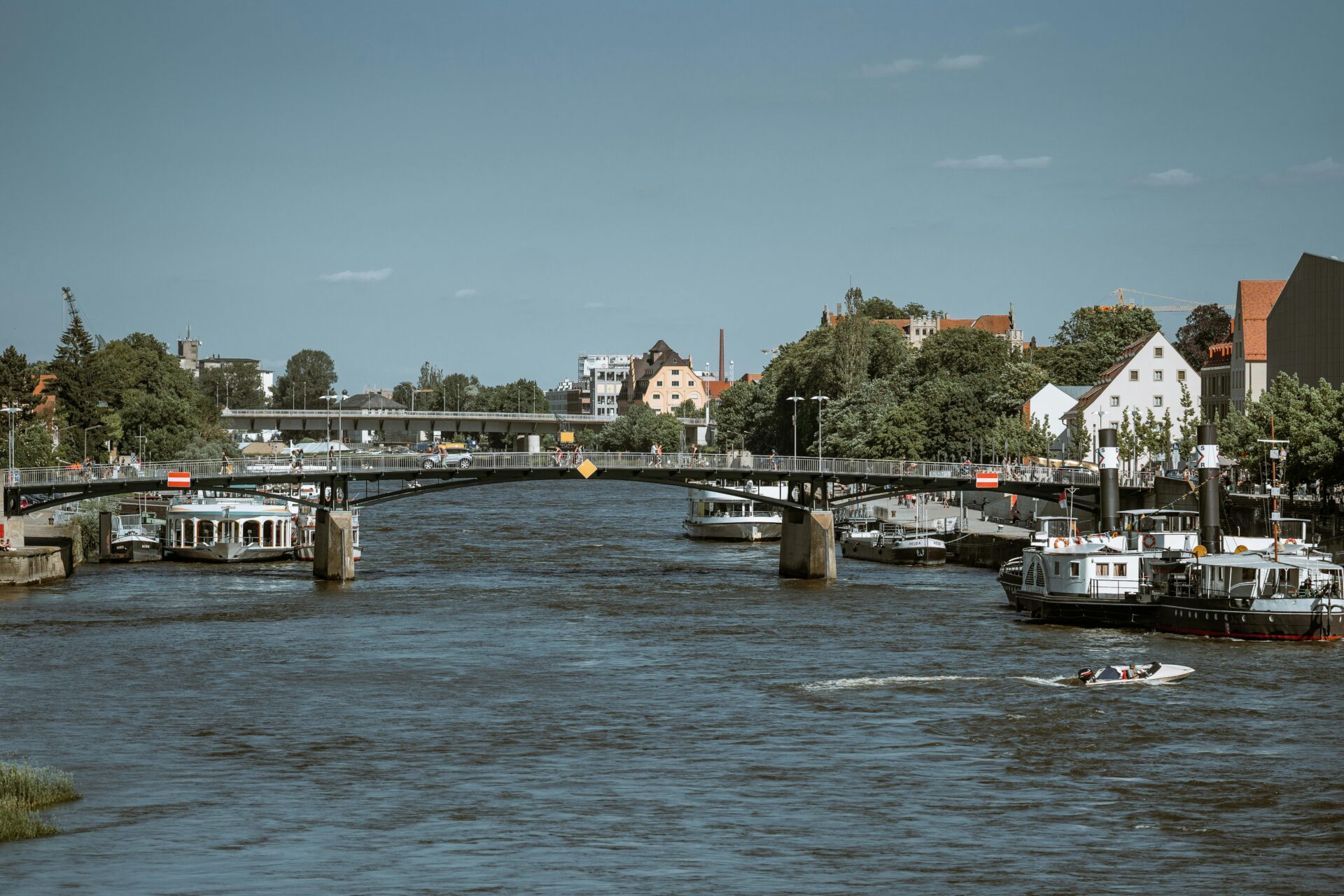
Historic Visits: Charlemagne, Second Crusade, and Beyond
I still find it amazing that Regensburg has welcomed so many legendary visitors. Charlemagne, the Frankish king who later became Emperor, actually used the city as his royal residence back in the 8th century.
His court really set the stage for Regensburg’s rise as a center of power and culture. That’s a pretty big deal, right?
In 1147, the Stone Bridge saw its own moment in history during the Second Crusade. King Conrad III led his army right across it, heading toward the Holy Land.
That event turned the bridge into a symbol of Europe’s connection to those huge religious and political movements. It’s kind of wild to think about all the stories those stones could tell.
Over the centuries, popes, emperors, and other rulers stopped by Regensburg. Each visit left its own mark, adding yet another layer to the city’s remarkable and surprisingly well-preserved tapestry.

